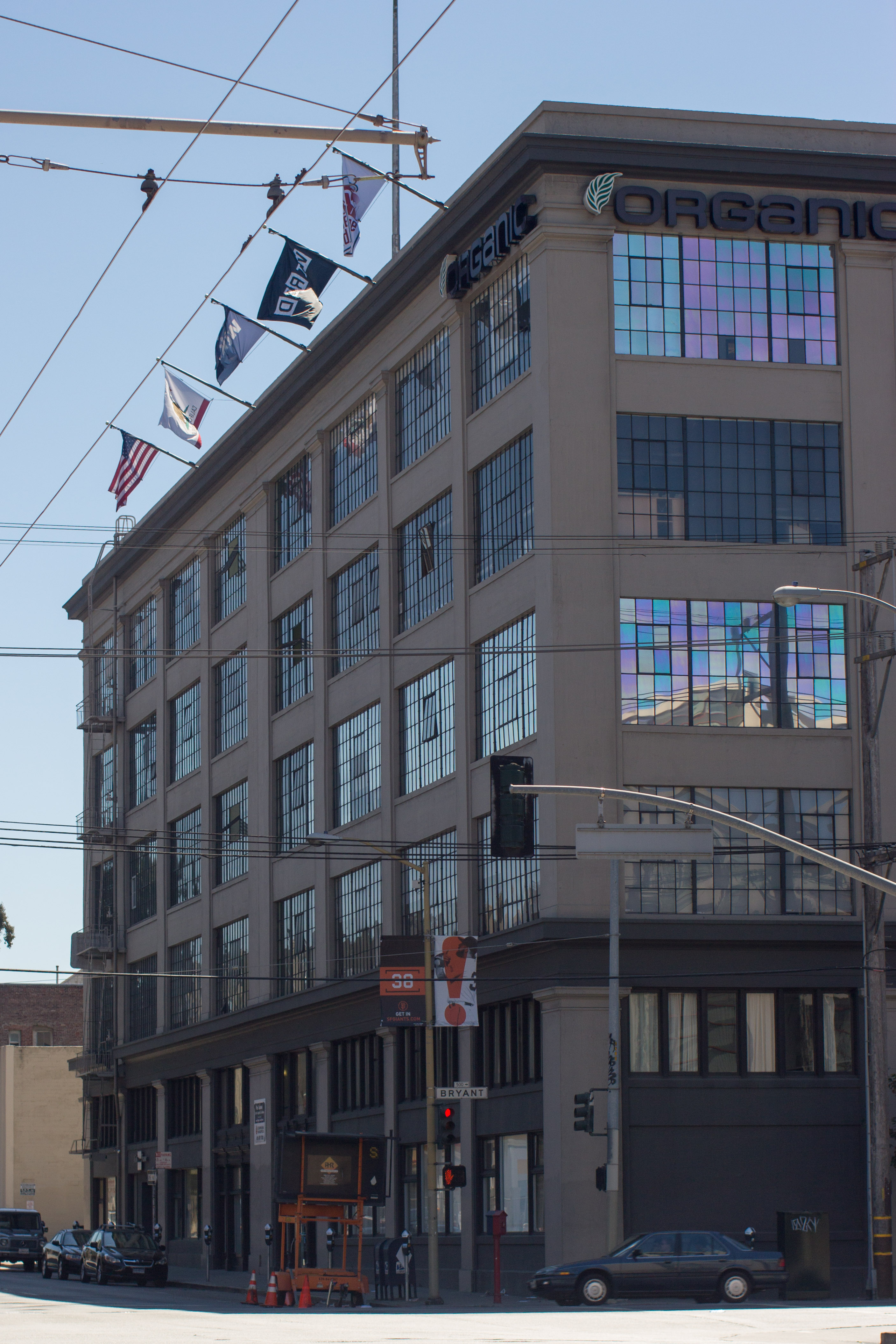|
Burn In
Burn-in is the process by which components of a system are exercised before being placed in service (and often, before the system being completely assembled from those components). This testing process will force certain failures to occur under supervised conditions so an understanding of load capacity of the product can be established. The intention is to detect those particular components that would fail as a result of the initial, high-failure rate portion of the bathtub curve of component reliability. If the burn-in period is made sufficiently long (and, perhaps, artificially stressful), the system can then be trusted to be mostly free of further early failures once the burn-in process is complete. Theoretically, any weak components would fail during the "Burn In" time allowing those parts to be replaced. Replacing the weak components would prevent premature failure, infant mortality failure, or other latent defects. When the equivalent lifetime of the stress is extended i ... [...More Info...] [...Related Items...] OR: [Wikipedia] [Google] [Baidu] |
Bathtub Curve
The bathtub curve is widely used in reliability engineering and deterioration modeling. It describes a particular form of the hazard function which comprises three parts: *The first part is a decreasing failure rate, known as early failures. *The second part is a constant failure rate, known as random failures. *The third part is an increasing failure rate, known as wear-out failures. The name is derived from the cross-sectional shape of a bathtub: steep sides and a flat bottom. The bathtub curve is generated by mapping the rate of early "infant mortality" failures when first introduced, the rate of random failures with constant failure rate during its "useful life", and finally the rate of "wear out" failures as the product exceeds its design lifetime. In less technical terms, in the early life of a product adhering to the bathtub curve, the failure rate is high but rapidly decreasing as defective products are identified and discarded, and early sources of potential failure s ... [...More Info...] [...Related Items...] OR: [Wikipedia] [Google] [Baidu] |
Wired (website)
''Wired'' (stylized as ''WIRED'') is a monthly American magazine, published in print and online magazine, online editions, that focuses on how emerging technologies affect culture, the economy, and politics. Owned by Condé Nast, it is headquartered in San Francisco, California, and has been in publication since March/April 1993. Several spin-offs have been launched, including ''Wired UK'', ''Wired Italia'', ''Wired Japan'', and ''Wired Germany''. From its beginning, the strongest influence on the magazine's editorial outlook came from founding editor and publisher Louis Rossetto. With founding creative director John Plunkett, Rossetto in 1991 assembled a 12-page prototype, nearly all of whose ideas were realized in the magazine's first several issues. In its earliest colophon (publishing), colophons, ''Wired'' credited Canadian media theorist Marshall McLuhan as its "patron saint". ''Wired'' went on to chronicle the evolution of digital technology and its impact on society. ' ... [...More Info...] [...Related Items...] OR: [Wikipedia] [Google] [Baidu] |
Shakedown (testing)
A shakedown is a period of testing or a trial journey undergone by a ship, aircraft or other craft and its crew before being declared operational. Statistically, a proportion of the components will fail after a relatively short period of use, and those that survive this period can be expected to last for a much longer, and more importantly, predictable life-span. For example, if a bolt has a hidden flaw introduced during manufacturing, it will not be as reliable as other bolts of the same type. Example procedures Racing cars Most racing cars require a "shakedown" test before being used at a race meeting. For example, on May 3, 2006, Luca Badoer performed shakedowns on all three of Ferrari's Formula One cars at the Fiorano Circuit, in preparation for the European Grand Prix at the Nürburgring. Badoer was the Ferrari F1 team's test driver at the time, while the main drivers were Michael Schumacher and Felipe Massa. Aircraft Aircraft shakedowns check avionics, flight controls, ... [...More Info...] [...Related Items...] OR: [Wikipedia] [Google] [Baidu] |
Dielectric Withstand Test
A dielectric withstand test (or pressure test, high potential or hipot test) is an electrical test performed on a component or product to determine the effectiveness of its insulation. The test may be between mutually insulated sections of a part or energized parts and electrical ground. The test is a means to qualify a device's ability to operate safely during rated electrical conditions. If the current through a device under test is less than a specified limit at the required test potential and time duration, the device meets the dielectric withstand requirement. A dielectric withstand test may be done as a factory test on new equipment, or may be done on apparatus already in service as a routine maintenance test.Paul Gill (2009), ''Electrical Power Equipment Maintenance and Testing'', Second Edition, CRC Press, 1574446568, page 459 Voltage withstand testing is done with a high voltage source and voltage and current meters. A single instrument called a "pressure test set" or "hi ... [...More Info...] [...Related Items...] OR: [Wikipedia] [Google] [Baidu] |
Survival Analysis
Survival analysis is a branch of statistics for analyzing the expected duration of time until one event occurs, such as death in biological organisms and failure in mechanical systems. This topic is called reliability theory or reliability analysis in engineering, duration analysis or duration modelling in economics, and event history analysis in sociology. Survival analysis attempts to answer certain questions, such as what is the proportion of a population which will survive past a certain time? Of those that survive, at what rate will they die or fail? Can multiple causes of death or failure be taken into account? How do particular circumstances or characteristics increase or decrease the probability of survival? To answer such questions, it is necessary to define "lifetime". In the case of biological survival, death is unambiguous, but for mechanical reliability, failure may not be well-defined, for there may well be mechanical systems in which failure is partial, a matter of ... [...More Info...] [...Related Items...] OR: [Wikipedia] [Google] [Baidu] |
Reliability Theory
Reliability engineering is a sub-discipline of systems engineering that emphasizes the ability of equipment to function without failure. Reliability describes the ability of a system or component to function under stated conditions for a specified period of time. Reliability is closely related to availability, which is typically described as the ability of a component or system to function at a specified moment or interval of time. The reliability function is theoretically defined as the probability of success at time t, which is denoted R(t). This probability is estimated from detailed (physics of failure) analysis, previous data sets or through reliability testing and reliability modelling. Availability, testability, maintainability and maintenance are often defined as a part of "reliability engineering" in reliability programs. Reliability often plays the key role in the cost-effectiveness of systems. Reliability engineering deals with the prediction, prevention and manageme ... [...More Info...] [...Related Items...] OR: [Wikipedia] [Google] [Baidu] |
Failure Rate
Failure rate is the frequency with which an engineered system or component fails, expressed in failures per unit of time. It is usually denoted by the Greek letter λ (lambda) and is often used in reliability engineering. The failure rate of a system usually depends on time, with the rate varying over the life cycle of the system. For example, an automobile's failure rate in its fifth year of service may be many times greater than its failure rate during its first year of service. One does not expect to replace an exhaust pipe, overhaul the brakes, or have major transmission problems in a new vehicle. In practice, the mean time between failures (MTBF, 1/λ) is often reported instead of the failure rate. This is valid and useful if the failure rate may be assumed constant – often used for complex units / systems, electronics – and is a general agreement in some reliability standards (Military and Aerospace). It does in this case ''only'' relate to the flat region of the ba ... [...More Info...] [...Related Items...] OR: [Wikipedia] [Google] [Baidu] |
Burn-in Oven
Burn-in ovens in electronics device fabrication, are designed for dynamic and static burn-in of integrated circuits and other electronic devices, including laser diodes. Typical sizes are from under ten to over , with air or nitrogen configurations. Operating temperatures can go over , and can use both single and multiple temperature settings. Burn-in oven applications can be used in numerous different applications such as high-dissipation forward bias, high-temperature reverse bias, dynamic and static burn-in of microprocessors and other semiconductor A semiconductor is a material which has an electrical conductivity value falling between that of a conductor, such as copper, and an insulator, such as glass. Its resistivity falls as its temperature rises; metals behave in the opposite way. ... devices. Burn-in ovens are considered a type of batch oven. Other types of batch ovens are bench/laboratory, reach-in, walk in/truck in, and clean process. One company builds s ... [...More Info...] [...Related Items...] OR: [Wikipedia] [Google] [Baidu] |
Audiophile
An audiophile is a person who is enthusiastic about high-fidelity sound reproduction. An audiophile seeks to reproduce the sound of a piece of recorded music or a live musical performance, typically inside closed headphones, In-ear monitors, open headphones in a quiet listening space, or a room with good acoustics. Audiophile values may be applied at all stages of music reproduction: the initial audio recording, the production process, and the playback, which is usually in a home setting. In general, the values of an audiophile are seen to be antithetical to the growing popularity of more convenient but lower quality music, especially lossy digital file types like MP3, lower definition streaming services, and inexpensive headphones. The term ''high-end audio'' refers to playback equipment used by audiophiles, which may be bought at specialist shops and websites. High-end components include turntables, digital-to-analog converters, equalization devices, preamplifiers and amplifie ... [...More Info...] [...Related Items...] OR: [Wikipedia] [Google] [Baidu] |
Voltage
Voltage, also known as electric pressure, electric tension, or (electric) potential difference, is the difference in electric potential between two points. In a static electric field, it corresponds to the work needed per unit of charge to move a test charge between the two points. In the International System of Units, the derived unit for voltage is named ''volt''. The voltage between points can be caused by the build-up of electric charge (e.g., a capacitor), and from an electromotive force (e.g., electromagnetic induction in generator, inductors, and transformers). On a macroscopic scale, a potential difference can be caused by electrochemical processes (e.g., cells and batteries), the pressure-induced piezoelectric effect, and the thermoelectric effect. A voltmeter can be used to measure the voltage between two points in a system. Often a common reference potential such as the ground of the system is used as one of the points. A voltage can represent either a source ... [...More Info...] [...Related Items...] OR: [Wikipedia] [Google] [Baidu] |
Temperature
Temperature is a physical quantity that expresses quantitatively the perceptions of hotness and coldness. Temperature is measured with a thermometer. Thermometers are calibrated in various temperature scales that historically have relied on various reference points and thermometric substances for definition. The most common scales are the Celsius scale with the unit symbol °C (formerly called ''centigrade''), the Fahrenheit scale (°F), and the Kelvin scale (K), the latter being used predominantly for scientific purposes. The kelvin is one of the seven base units in the International System of Units (SI). Absolute zero, i.e., zero kelvin or −273.15 °C, is the lowest point in the thermodynamic temperature scale. Experimentally, it can be approached very closely but not actually reached, as recognized in the third law of thermodynamics. It would be impossible to extract energy as heat from a body at that temperature. Temperature is important in all fields of natur ... [...More Info...] [...Related Items...] OR: [Wikipedia] [Google] [Baidu] |



